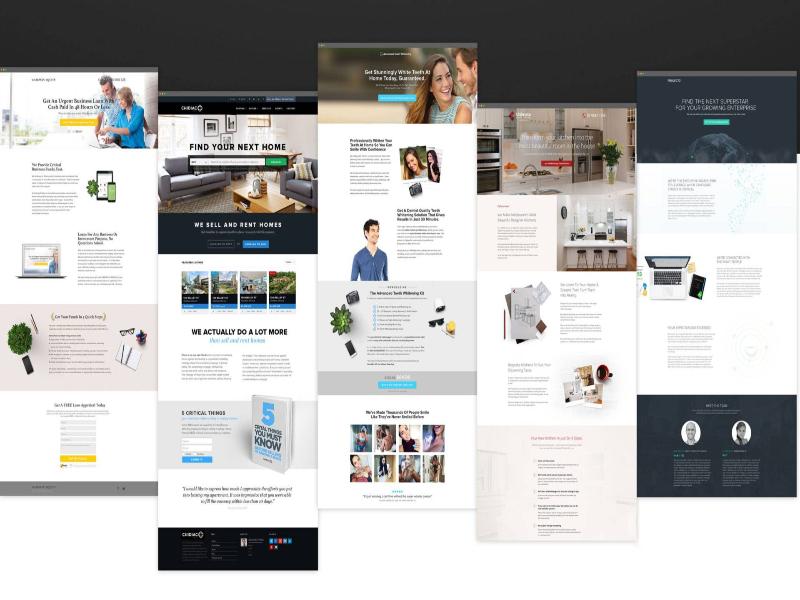Web Design Mastery (Ultimate Guide)
Welcome to our comprehensive guide to web design mastery! This guide will equip you with the necessary web design skills to create stunning and user-friendly websites.
In today’s digital age, website design and development go hand in hand. Understanding web development is crucial to building a strong foundation for web design.
You will learn the basics of web development, including HTML/CSS, to create a seamless user experience. With the increasing use of mobile devices, responsive design has become essential.
Web Design Mastery Guide
Our guide will help you master the art of responsive design and create optimized experiences for users across various platforms.
How to Be a Pro Web Developer (Key Skills and Resources)
Additionally, we will explore search engine optimization, website performance, and interactive elements to make websites dynamic and engaging.
With our guide, you will learn how to adapt to emerging technologies and stay ahead in this fast-paced and ever-changing field. Are you ready to master web design and take your skills to the next level? Let’s get started!
Understanding Web Development
If you want to become a successful web designer, it’s essential to have a solid understanding of web development. Familiarize yourself with HTML/CSS, the building blocks of any website, and learn the basics of front-end development.
HTML, or Hypertext Markup Language, is the standard language for creating web pages and applications. CSS, or Cascading Style Sheets, controls the visual style of a website, including layout, color, and font.
Together, they allow you to create visually appealing and functional websites.
Having a grasp of web development provides a strong foundation for your web design journey.
It allows you to collaborate more effectively with developers and implement designs with ease. So, take the time to master these crucial web design skills, and you’ll be well on your way to creating beautiful websites.
Designing User-Friendly Websites
A successful website is a combination of appealing aesthetics and seamless functionality that caters to the user’s needs. Hence, the user experience (UX) plays a critical role in web design.
Begin by understanding the principles and best practices for creating user-friendly websites that provide a tailored user experience.
Intuitive Navigation
Navigation is an essential element and a critical factor in determining the success of a website.
Keep the navigation system clear, straightforward, and consistent throughout the website. Use appropriate labeling, such as About Us, Services, and Contact, limiting the number of navigational options to avoid overwhelming the user.
Compelling Interfaces
A website’s interface serves as a bridge between users and the website’s content.
Create compelling interfaces by incorporating visual elements, such as images, videos, or animations, and limiting the use of text-heavy pages. Ensure the website’s design is consistent on all pages and aligns with the brand’s message.
Consider using compelling Call To Action (CTA) buttons to guide users through the website’s crucial pages.
Visually Appealing Layouts
The layout of a website should align with the brand’s image and be aesthetically pleasing to the user. It should also include appropriate white space and a consistent color theme.
Effective website layouts provide a clear view of the website page hierarchy, prioritizing content according to its importance.
Adequate spacing between content groups and a balanced layout design will enhance readability and the user’s attention span.
Design Like a Pro: Elevate Your Projects with these 10 AI Tools for Web Designers!
In conclusion, it creates a positive user experience while also aligning with the brand’s message and values. By following these principles, you can create a user-friendly website that stands out in the crowded digital environment.
Mastering Responsive Design
With the increasing use of mobile devices, it has become essential to have a website that is compatible with different screen sizes and resolutions.
Responsive design ensures that your website adapts to the screen size of the user’s device, providing an optimal viewing experience.
To master responsive design, explore techniques and strategies such as:
- Using fluid grids and flexible layouts that adjust to the screen size
- Implementing media queries to apply different styles based on device characteristics
- Using responsive images that optimize for different screen resolutions and sizes
- Creating prototypes and testing your designs on different devices to ensure compatibility
Mastering responsive design will enable you to create websites that provide an optimized user experience across various platforms and devices.
Implementing SEO Optimization
Your well-designed website may go unnoticed by search engines without proper SEO optimization. Learning the fundamentals of search engine optimization (SEO) can help improve the visibility of your website.
Implementing key strategies, such as keyword research, on-page optimization, and link building, can drive organic traffic to your site, resulting in increased views and potential clients.
Keyword Research
Keyword research is a crucial aspect of SEO optimization. Identify the keywords and phrases your target audience is searching for and use them appropriately throughout your website.
Avoid “stuffing” your website with keywords as this can result in your website being penalized by search engines.
On-Page Optimization
On-page optimization involves optimizing your website’s internal elements to improve its ranking in search results. Ensure your website’s title tags, meta descriptions, and header tags include relevant keywords.
Optimize your website for readability and mobile viewing as well as improve its overall user experience.
Link Building
Link building is the process of getting other websites to link back to your website. This can improve your website’s authority and, in turn, its ranking in search engine results. Focus on acquiring quality, relevant backlinks from reputable sources to boost your website’s credibility and visibility.
Maximizing Website Performance
Optimizing website performance is crucial to enhance user experience and improve search engine rankings. Slow-loading web pages can drive away users, negatively impacting engagement and conversion rates.
Therefore, it is important to master techniques to optimize load times, enhance website speed, and minimize resource consumption.
Techniques to Enhance Website Performance
Reduce Image Size: Images are vital components of web design. However, their file sizes can significantly slow down your website. Compressing images and reducing their size can help improve website speed.
Minify CSS and JavaScript: Eliminating unnecessary code and reducing file sizes can speed up web page loading times. Minifying CSS and JavaScript files helps reduce server response times, improving website speed.
Creating a Fast-Loading Website
Choose a reliable web host: Working with a reliable web host can ensure that your website is up and running smoothly with maximum uptime, ensuring that your website loads as quickly as possible.
Implement a Content Delivery Network (CDN): A CDN can improve website speed by caching your website’s content on multiple servers around the world, reducing latency and improving loading times for users.
By implementing these techniques, you can create high-performing websites that provide a seamless browsing experience, enhancing user satisfaction and driving organic traffic to your website, positively impacting your search engine rankings.
Integrating Interactive Elements
Integrating interactive elements is an excellent way to elevate your website’s user engagement and make it more captivating.
From animations and sliders to forms and many interactive design elements that can create a dynamic and engaging user experience.
To integrate these elements, you must have a solid foundation in web development and website design. Once you have this foundation, you can explore techniques to incorporate interactive elements seamlessly into your website.
Animations can add life and movement to your website, making it more visually appealing. Sliders can showcase content visually dynamically, allowing users to scroll through images and information.
Forms and quizzes can provide valuable user data and can help increase user engagement.
When integrating interactive elements into your website, it is crucial to ensure that they are well-designed and enhance user experience rather than detract from it.
Remember to keep a balance between interactivity and usability, and test your interactive elements to ensure they function properly. With these techniques, you can create dynamic and engaging websites that leave a lasting impression on your users.
Staying Updated in the Field
Web design is a rapidly evolving field to succeed, it is imperative to stay updated with the latest industry trends and technological advancements.
By continuously enhancing your web design skills and staying current with the latest web development practices, you can stay ahead of the competition and deliver cutting-edge designs that meet the demands of today’s digital landscape.
Resources for Keeping Up-to-Date
Therseveralber of resources available that can help you stay abreast of industry developments. Consider subscribing to web design blogs, reading design books, and attending industry conferences.
These resources can provide valuable insight into the latest web design techniques, trends, and technologies.
Developing Your Skills
It’s essential to develop your skills in web design and to stay current with the latest industry trends. Take the time to invest in your professional development by taking online courses, attending workshops, and seeking mentorship opportunities.
Digital Marketing Mastery (Strategies for Tech-Savvy Marketers)
By continuously honing your web design skills, you’ll be able to incorporate the latest techniques and technologies into your work.
Adapting to Emerging Technologies
As web design continues to evolve, so too do the technologies that power it. It’s important to stay informed about emerging technologies and to stay up-to-date with the latest tools and software.
By adapting to new technologies, you can deliver cutting-edge designs that provide an optimal user experience across all platforms.
Conclusion
Congratulations on completing this comprehensive guide to mastering web design! You now have the knowledge and skills to excel in this fast-paced and ever-changing field.
Remember to keep honing your craft and staying up to date with the latest trends and technologies to stay ahead of the competition.
Always keep in mind the importance of user experience, responsive design, SEO optimization, website performance, and interactive elements when creating stunning and user-friendly websites.
9+ Best Blogging Platforms to Consider for Your Next Blog
With your newfound expertise, you have the potential to create websites that leave a lasting impact on your users. So, go out there and put your skills to the test. Now is the time to take the first step towards becoming a skilled and successful web designer!







